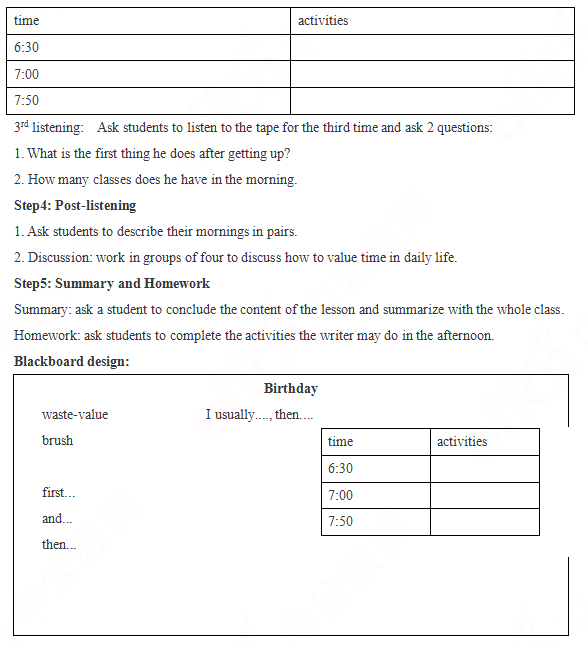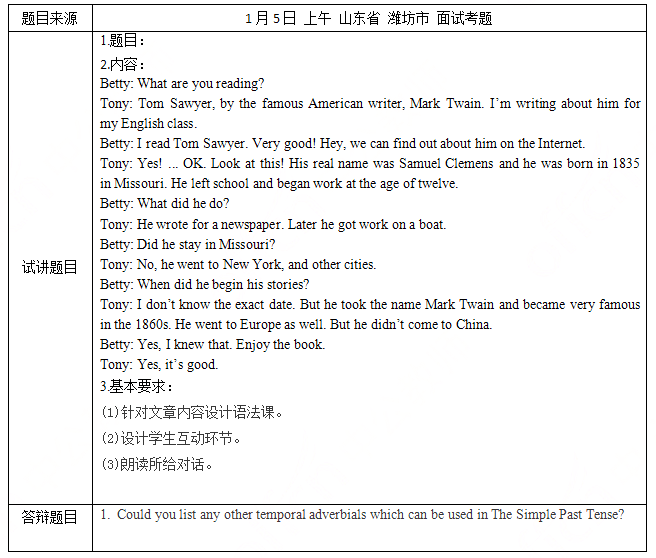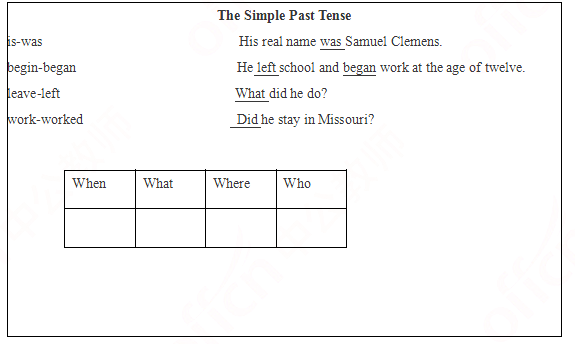Aphonemes
Bmorphemes
Callophones
Dphones
第1题:
The smallest meaningful unit of language is called a morph.()
第2题:
Passage Five
In order to learn a foreign language well, it is necessary to overcome the fear of making mistakes. If the primary goal (目标) of language use is communication (交际), then mistakes are secondary considerations that may be dealt with gradually. On the other hand, students should not ignore their mistakes. The language learner may observe how native speakers express themselves, and how native expressions differ from the way the learner might say them. For example, a Spanish speaker who has been saying "I do it" to express willingness to do something in the immediate future, could, by communicating with native speakers of English, observe that native speakers actually say "I'll do it". The result can serve as a basis for the student to change his way of using the present tense in English. But a student who is unwilling to communicate in the first place would lose this opportunity to learn by trial and error.
52. According to the passage, the present tense in English is ______.
A. not used to express one's readiness to do something in the immediate future
B. used with some verbs but not with others to express future intention
C. basically the same in English as it is in Spanish
D. not the most difficult problem for foreign students
第3题:
A.((Element).doc.getElementsByTagName(“PERSON”).item(0)).getNodeValue;
B.((Element).doc.getElementsByTagName(“PERSON”).item(0)).getFristChild().getNodeValue();
C.((Element).doc.getElementsByTagName(“PERSON”).item(0)).getElementsByTagName(“NAME”).item(0).getNodeValue();
D.((Element).doc.getElementsByTagName(“PERSON”).item(0)).item(0).getNodeValue();
第4题:


第5题:
第6题:
Meaning is a relatively stable element in a language compared with spelling.()
第7题:
第8题:
A.((Element)doc.getElementsByTagName(“PERSON”).item(0)).getNodeValue()
B.((Element)doc.getElementsByTagName(“PERSON”).item(0)).getElementsByTagName(“NAME”).item(0).getFirstChild().getNodeValue()
C.((Element)doc.getElementsByTagName(“PERSON”).item(0)).getElementsByTagName(“NAME”).item(0).getNodeValue()
D.((Element)doc.getElementsByTagName(“PERSON”).item(0)).item(0).getNodeValue()
第9题:


第10题:

